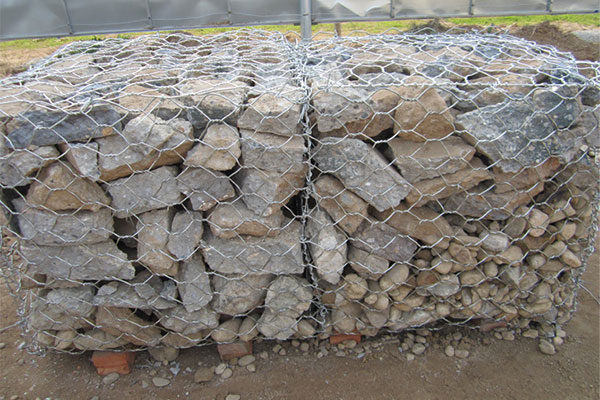What is a Gabion Basket?
In the realm of landscaping and civil engineering, gabion baskets have emerged as versatile and innovative solutions that seamlessly blend functionality with aesthetic appeal. These wire mesh containers, filled with stones or other materials, have gained immense popularity due to their ability to serve multiple purposes, from erosion control and retaining walls to decorative elements.
What are Gabion Baskets?
Gabion baskets, also known as gabion boxes, cages, or mattresses, are essentially wire mesh containers crafted from galvanized steel. These containers are filled with rocks, stones, or other durable materials, creating a sturdy and visually appealing structure. The baskets are available in various shapes and sizes, allowing for flexibility in design and application.

Benefits of Gabion Baskets
- Erosion Control: One of the primary functions of gabion baskets is erosion control. Placing these baskets in areas prone to soil erosion helps prevent the loss of soil due to water runoff. The interlocking nature of the stones within the baskets stabilizes the soil and reduces the impact of water flow, preserving the landscape’s integrity.
- Retaining Walls: Gabion baskets are often used to construct retaining walls that hold back soil and prevent slope erosion. These walls can be designed to blend harmoniously with the surrounding environment while providing effective support and stability to the landscape.
- Flood Management: In flood-prone areas, gabion baskets act as effective flood barriers. Their sturdy construction and weight help to redirect and control the flow of water, minimizing the potential damage caused by flooding.
- Decorative Elements: Beyond their utilitarian functions, gabion baskets have become popular for their aesthetic value. They can be used as eye-catching decorative elements in outdoor spaces, adding texture, dimension, and character to gardens, parks, and public areas.
- Sustainable Solution: Gabion baskets promote sustainability by utilizing natural materials and reducing the need for concrete or other non-biodegradable materials. The baskets allow for the growth of vegetation among the rocks, further enhancing their eco-friendly nature.
Applications of Gabion Baskets
- Garden Landscaping: Gabion baskets are widely used in garden landscaping to create visually striking features such as retaining walls, planters, benches, and boundary walls. Their natural appearance blends seamlessly with various plant species, enhancing the overall beauty of the garden.
- Roadside Protection: Along highways and roads, gabion baskets serve as effective barriers against rockfall and soil erosion. They provide protection for both motorists and the surrounding environment by preventing debris from spilling onto the road.
- Waterfront Projects: Gabion baskets find applications in waterfront projects such as coastal erosion control and the stabilization of riverbanks. Their robust structure helps minimize the impact of water currents and tides, safeguarding the shoreline.
- Urban Development: In urban settings, gabion baskets are used to create distinctive urban furniture, sound barriers, and art installations. These applications not only serve practical purposes but also contribute to the city’s aesthetic appeal.
Conclusion
Gabion baskets have revolutionized the worlds of landscaping and civil engineering with their remarkable versatility and aesthetic charm. Combining functionality with visual appeal, these wire mesh containers offer solutions for erosion control, retaining walls, flood management, and even decorative enhancements. As a sustainable and durable option, gabion baskets have secured their place as a go-to choice for architects, landscapers, and homeowners seeking to create resilient and captivating outdoor spaces. Whether you’re looking to prevent erosion, construct stunning features, or simply add a touch of natural beauty, gabion baskets have something extraordinary to offer.
